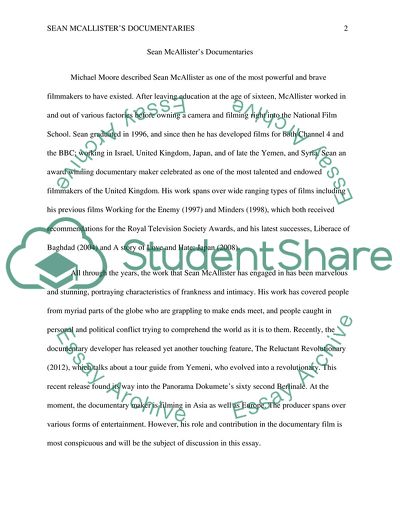Cite this document
(Sean Mcallisters Documentaries Coursework Example | Topics and Well Written Essays - 2500 words, n.d.)
Sean Mcallisters Documentaries Coursework Example | Topics and Well Written Essays - 2500 words. https://studentshare.org/visual-arts-film-studies/1829806-documentary-hero-or-villain
Sean Mcallisters Documentaries Coursework Example | Topics and Well Written Essays - 2500 words. https://studentshare.org/visual-arts-film-studies/1829806-documentary-hero-or-villain
(Sean Mcallisters Documentaries Coursework Example | Topics and Well Written Essays - 2500 Words)
Sean Mcallisters Documentaries Coursework Example | Topics and Well Written Essays - 2500 Words. https://studentshare.org/visual-arts-film-studies/1829806-documentary-hero-or-villain.
Sean Mcallisters Documentaries Coursework Example | Topics and Well Written Essays - 2500 Words. https://studentshare.org/visual-arts-film-studies/1829806-documentary-hero-or-villain.
“Sean Mcallisters Documentaries Coursework Example | Topics and Well Written Essays - 2500 Words”. https://studentshare.org/visual-arts-film-studies/1829806-documentary-hero-or-villain.


